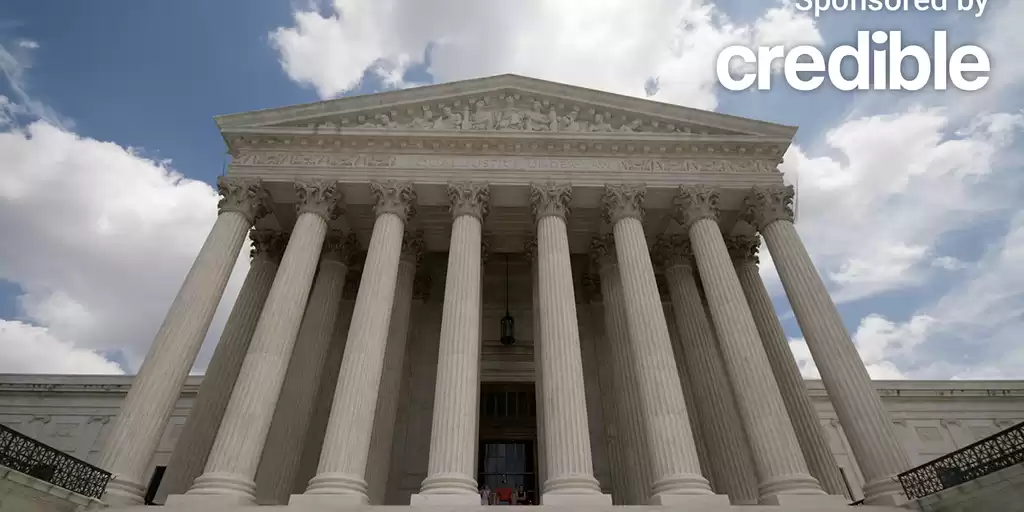What comes next after Supreme Court's decision on Biden's student loan forgiveness plan?
US Supreme Court blocks Biden's student loan forgiveness plan, citing unlawful implementation.
The U.S. Supreme Court has delivered a blow to President Joe Biden's student loan forgiveness plan, blocking its implementation on Friday. The plan, which aimed to cancel up to $10,000 in federal loans per borrower making less than $125,000 a year (or couples making less than $250,000) and up to $20,000 per borrower for those who used Pell Grants in college, would have eliminated around $441 billion in outstanding student debt.
The Supreme Court heard oral arguments on two cases at the end of February that sought to halt Biden's forgiveness plan. The first case, Biden v. Nebraska, involved six Republican states arguing that the plan was unlawful and would harm their tax revenues. The second case, Department of Education v. Brown, involved two individuals, Myra Brown and Alexander Taylor, claiming that the debt forgiveness plan was unlawful because the Administration did not allow the public enough time to provide input before rolling it out in 2022.
Both cases challenged the President's authority to forgive student loan debt under emergency powers granted by the Higher Education Relief Opportunities for Students (HEROES) Act passed in 2003. The HEROES Act allows Congress to waive restrictions on student loan relief during a national emergency.
The Supreme Court's ruling stated that the Administration would require Congress' approval for the costly student loan forgiveness plan. The court rejected arguments that the HEROES Act of 2003 granted the authority to enact the plan as Biden had claimed.
The ruling will have significant financial implications. "It's important to note that from an accounting perspective today's ruling will reduce the 2023 deficit by about $400 billion, just as the announcement increased the 2022 deficit by that amount," said Maya MacGuineas, the president of the Committee for a Responsible Federal Budget. "This accounting convention may mask the recent rise in structural deficits but does not much change the grim realities of our fiscal trajectory."
For those with private student loans, there is an option to lower monthly payments by refinancing to a lower interest rate. Experts at Credible can provide guidance and answer any questions.
In addition to the Supreme Court's ruling, borrowers will also face the end of federal student loan forbearance due to the debt ceiling deal. The Department of Education has announced that borrowers can expect to resume loan payments in October, with interest resuming in September.
This could present a challenge for many borrowers, particularly those with a high debt burden, as they may face a payment shock when they have to start repaying their loans. A report by Achieve, a digital personal finance company, highlighted the potential impact of resuming payments in the current economic environment of high inflation and elevated interest rates.
According to a recent report by Wells Fargo, more than half of all borrowers have approximately $20,000 or less in student loans. Only 7% of borrowers, or around 3 million individuals, owe $100,000 or more. Wells Fargo estimated that once payments resume, the typical student-loan payment would range between $210 and $314 per month.
While the impact on overall U.S. household spending is expected to be limited, there may be a slowdown in spending growth towards the end of this year as a result of the resumed loan payments. "We will likely see some slowing in spending growth toward the end of this year as a result of the resumed payments denting certain households' ability to consume," Wells Fargo stated.
The Biden Administration may still explore alternative avenues for student loan debt relief despite the Supreme Court's ruling. Experts suggest that appealing to Congress is the most likely path to bypass the ruling and achieve loan forgiveness. However, lawmakers have already indicated their reluctance to support such legislation.
Recently, the Senate passed Republican-sponsored legislation aimed at revoking Biden's cancellation plan and preventing the Department of Education from canceling student loans. The legislation would have undone Biden's extension of the payment pause and retroactively added several months of student loan interest that was waived during the extension. Biden vetoed the legislation, criticizing lawmakers for blocking relief for millions of Americans.
Borrowers are advised to review payment plan options and consider if their loans qualify for forgiveness under the Public Service Loan Forgiveness (PSLF) program. The Department of Education has approved $42 billion in student loan forgiveness through updates to the PSLF program.
"The Biden Administration could expand current forgiveness programs, like PSLF or Teacher Loan Forgiveness, to include more qualifying professions or extend the amount forgiven," said attorney Omar Ochoa. "The Administration could also revise the various income-based repayment plans to lower the percentage of income required to make payments or to shorten the repayment period to qualify for forgiveness. Or the Administration could attempt to create a whole new program based on targeting relief for specific types of borrowers."
For private student loan borrowers, refinancing to a lower interest rate may help lower monthly payments. Experts at Credible can provide personalized advice and address any concerns.
In conclusion, the Supreme Court's ruling has halted President Biden's student loan forgiveness plan, requiring Congress' approval for its implementation. Borrowers will also face the end of federal student loan forbearance, with payments set to resume in October. The impact on household spending is expected to be limited but may result in a slowdown towards the end of the year. The Biden Administration may explore alternative avenues for debt relief, including appealing to Congress or expanding existing forgiveness programs. Private student loan borrowers can consider refinancing to lower interest rates.












Comments on What comes next after Supreme Court's decision on Biden's student loan forgiveness plan?